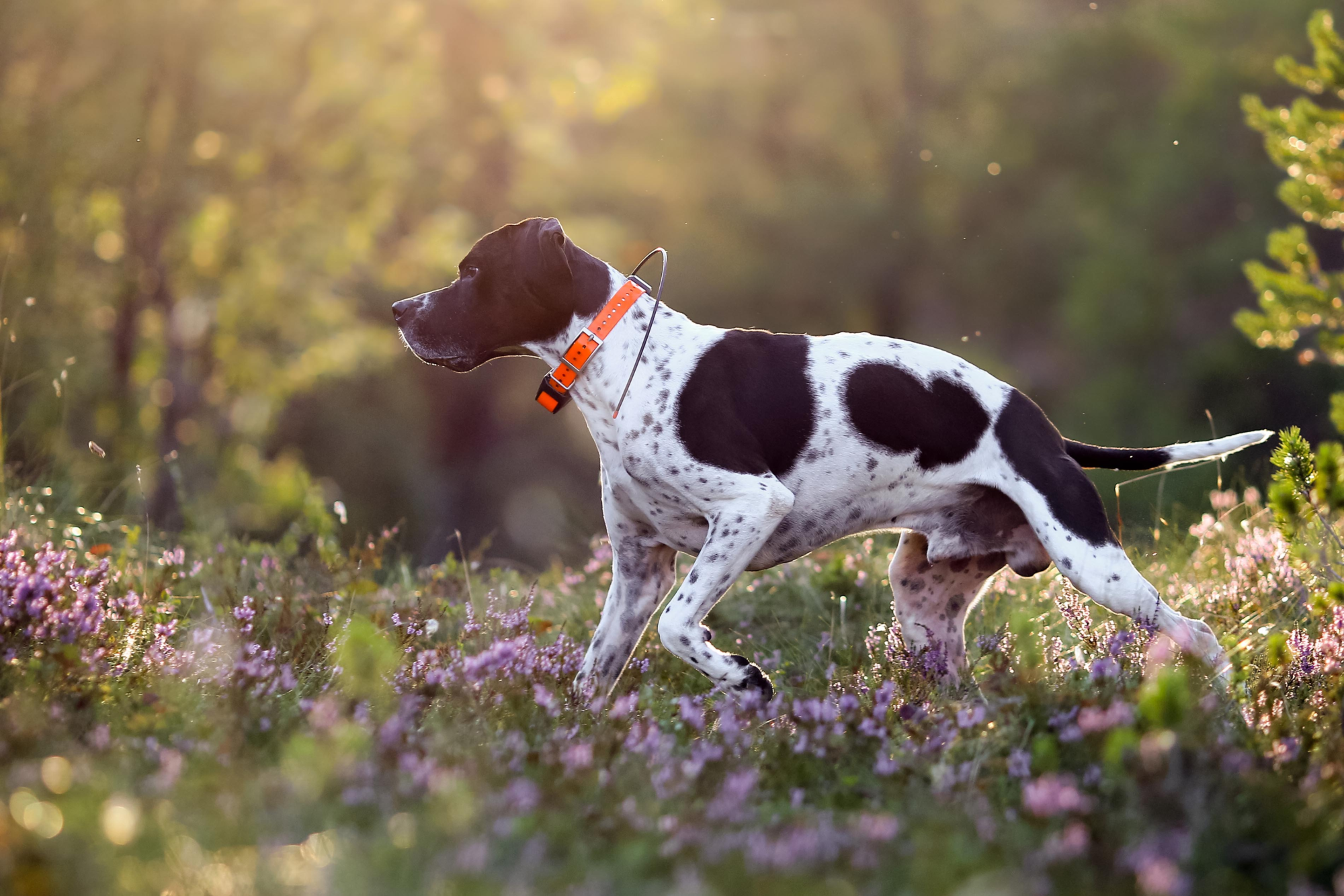Posts Tagged: Pet Care Blog
Microchips: Why do They Matter?
Microchips are becoming more and more common. You may have been asked by your veterinary team about microchipping your cat or dog last time you visited. But you might be asking – why? There are a number of reasons to get your pets microchipped. Keep reading to learn more!

Microchips Help Lost Pets get Home
Accidents happen. In this case, we are referring to a cat who slips past you to get outside, or a dog who who gets off their leash. You might see your pet disappear down the road. Even if you begin looking for them immediately, you may not find them. They may even be found by someone else before you.
This is where a microchip comes in! If your pet is microchipped, then they can be checked by an animal shelter or veterinarian and identified. Microchips hold your contact information, and some providers even send out lost pet notifications on your behalf. Microchips make it more likely to have your lost pet come home. In fact, the American Veterinary Medical Association references a study of over 7,700 shelter pets, which found that microchips make you more likely to be reunited with your pet! Dogs with microchips were returned to their owners at double the rate of dogs without microchips. For cats, the return rate was even more dramatic with microchips, at over nineteen times more likely to be returned to owners if they had one.
Do Microchips Harm Pets?
Microchips are able to be placed during a routine visit with your veterinarian. They are placed using a hypodermic needle, and don’t hurt any more than normal vaccines and injected medications for your pet. If your pet is already going under anesthesia, such as for neutering or spaying, the microchip can be placed at that time as well.
What about your privacy?
Don’t worry. While microchips store your contact information, it is only used in the event that your pet is lost and someone scans it to then contact you. Some manufacturers offer additional communication, such as newsletters or lost pet alerts, but you can typically opt out of these. Overall, the only information found in the microchip database is the information you choose to provide. It is important to make sure you register the microchip so it will have correct information to reach out and contact you.
Do Microchips replace ID and Rabies tags?
The simple answer is: No! While microchips are great as a permanent method to identify your pet and provide your contact information, nothing can fully replace a collar with tags on it. Tags on a collar are usually the quickest way to identify a pet and return it to it’s owner. Additionally, the rabies tag should always be displayed on your pets collar. It allows people to confirm your pet is vaccinated against the dangerous illness. Plus, the rabies tag numbers can be another way to trace your pets identity and return them to you.
For additional information on what to do in the event of a lost pet, you can check out our blog covering lost pet resources.
Disclaimer: This written content is meant to be educational and is not medical advice. Always consult a veterinarian about medical advice for your pet.
Camp Fire Safety Tips
We are in the peak of summer, which means trips to the beach and trips to the campground. Bringing your dog along to the campground with you is always fun. But there is a big safety hazard when your dog comes with you: the camp fire pit. Here are some things you can do to keep your pet safe during your camping trip.

Camp Fire Pit Training
The first step in camp fire safety is to teach your dog that the fire pit is not a place they are allowed. By teaching them to steer clear of the pit, they are less likely to approach it. Even when the fire pit is empty and unlit, your dog should not be allowed to touch it. There are many tempting things that go into a fire pit that a dog might want, especially if your dog loves playing with sticks! Your kindling and large sticks placed in the pit may be attractive toys to your dog. Setting a clear, off-limits boundary can prevent them from approaching to take the sticks, especially when the fire is lit!
Food at the Camp Fire
One of the best parts about camping is cooking over the open flames of a fire pit. Cooking can be a big temptation for dogs to get close to the fire. Avoid giving them pieces of food while cooking or sitting around the camp fire. Doing so cause the dog to feel comfortable approaching the fire with or without you. The same goes for tossing food scraps in the fire. The smells of good, especially anything left over after the fire is put out, can attract your dog. They may dig in the pit to try and get the food, which could be covered in chemicals from other burning trash nearby. Worse still, there may be hot embers buried in the ashes that could burn and injure your dog.
Stay Aware of Your Dogs Presence
Many pets are able to roam around the campsite freely on long leashes, which isn’t a bad thing. It lets them stretch their legs and enjoy the trip as much as you are. Being close to the fire is dangerous though, even if it’s a few feet away. A gust of wind can pick up embers and drop then in the area surrounding the fire. If your dog is too close, these embers could land on them and hurt them. The wind can also carry the smoke to your dog. If you’ve had camp fire in your face before, you know it can burn the eyes and make it difficult to breath. The same thing happens to dogs. Some exposure is inevitable, but you should be aware off the signs that your dogs has breathed in too much.
Symptoms to watch for include:
- coughing
- wheezing
- loud or difficult breathing
- disorientation
- fatigue
- reduced appetited or thirst
- red, watering, or irritated eyes
To much smoke can cause these symptoms in senior and younger pets commonly. However, the most at-risk breeds are brachycephalic breeds, or breeds with scrunched noses. Try to keep your dog upwind of the fire whenever possible to avoid possible complications.
Equipment Hazards
Like at home, you will need to be smart about the storage of your camp fire equipment. It’s important to be aware of and properly store anything that gets hot, is sharp, or toxic chemicals for the fire when not in use. Be sure to keep sharp objects, like axes, put away after use. Keep items hot from being placed into the fire, such as cooking equipment, out of reach of your dog while they cool. When it comes to lighter fluid, put it away after you get a fire going to prevent your dog from getting exposed to it.
For information on safety for your pets with other fires, such as home or wild fires, check out this article by the ASPCA. For some summer treat ideas for your dog, check out our blog post here.
Disclaimer: This written content is meant to be educational and is not medical advice. Always consult a veterinarian about medical advice for your pet.
Things to Consider When Adopting a Pet

Adoptng a new pet is an exciting time! Whether you get a young puppy or kitten, or an older dog or cat, there are a variety of things to consider before you bring your new furry family member home. Here is a list of some important considerations before your first day home with a new pet
Veterinary Costs
To keep a new pet healthy, you should take them to the veterinarian at least once a year. During this visit, they will get necessary vaccinations against illness, and make sure there are no signs of health issues. You will need to set up an appointment for your pet to discuss being spayed/neutered if it hasn’t been done already. Fun fact: Getting your pet “Fixed” can have several health benefits! In addition to preventing unexpected puppies or kittens, you also can decrease the chance of your pet developing illnesses, including certain cancers!
Pet Insurance
Some veterinary costs are unexpected. Your pet may get hurt accidentally, hit by a car, or some other possible illness or injury that needs costly veterinary care to treat. To offset these greater costs, you can invest in pet insurance. Pet insurance works as a reimbursement program, and typically you can choose what you want to pay for monthly or annually, and how much coverage your pet gets. It’s good to shop around for the best options to fit your needs, and to get pet insurance early in your pets life.
The Commitment
Thanks to advances in veterinary medicine, nutrition, and the quality of care of our pets, they are living longer than ever, depending on size, dogs can live anywhere from 7 years to 16 years, with cats living from 12 to 18 years, and many may even live into their 20’s.
Pet Care
The biggest consideration before adopting a new pet, is the care that goes into it. Who will be feeding the pet? Who will be helping it get exercise through walks or play time? Will the pet need grooming? All of these factors add up in both time and money, and should be discussed thoroughly with your family before adopting a new cat or dog.
Lifestyle
You will need to think about your lifestyle before adopting a new pet. Are you a very active, outdoorsy person? Or do you prefer to be a homebody and read a good book? Different pets have different needs, and could either fit well or clash greatly with your lifestyle. An active person should consider an active breed of dog that enjoys exercise and time outdoors. Someone who is more of a homebody, should consider a cat, or a dog breed with lower energy levels.

Bringing a new pet home is a life changing thing, but it can be life changing in a good way. Make sure your ready for a new ball of fur and sunshine in your life! You can find additional information on preparing for a new pet here. For information on introducing a new puppy, you can check out our blog!
Disclaimer: This written content is meant to be educational and is not medical advice. Always consult a veterinarian about medical advice for your pet.
Year in Review: ZimmVets Five Best Blog Posts of 2023
by Katie Meneses, HR Manager
We put out blog posts every month of the year, covering pet topics from veterinary care, to general pet topics. Let’s look back through 2023 at some of our top posts with our Year in Review!
Year in Review Number Five – Why Grooming Your Dog is Important

Number five on the list of blogs is Why Grooming Your Dog is Important. This blog covers the different aspects of dog grooming, and why each one is important to your dogs health and general wellbeing. From nail trims, to taking care of their skin and the fur coat they wear, this article covers it all!
Number Four – Leptospirosis: A Risk to Pets and People!

Number four, is our article this year about Leptospirosis. Leptospirosis, or Lepto, is an illness that can effect both people and pets alike. This article warns about the ways you can get infected, typically in area’s with high levels of wildlife, and drinking, swimming, or walking through contaminated water and soil. Your dog can also pass it to you directly if they catch it from playing in some mud. This blog does over the symptoms of Lepto, as well as treatment and prevention through vaccination.
Number Three – Canine Influenza

Coming in at number three is our blog about canine influenza. Last year, Minnesota had an outbreak of canine influenza, centered primarily around the Twin Cities. We shared important information about how it spreads, as well as the signs and treatments through this blog post. The post also discusses prevention through vaccination, helping to protect your dog from illness.
Number Two – Get Your Dog Ready for Hunting Season

A big part of Minnesotan life is covered in our number two blog for this year, hunting season! Many people have dogs that they train and take out hunting with them every year. This article covers the important steps to take to keep your hunting companion protected and safe. From parasite protection, to vaccination, and exercise, this blog covers all the ways to keep your hunting dog healthy!
Year in Review Number One – Pet Arthritis is Common and Treatable

Finally, our number one blog for this year, is Pet Arthritis is Common and Treatable. Arthritis is a very common illness among pets. Cats and dogs alike can suffer from arthritis, starting at early ages. However, we have had new medications released in the last two years, plus pain management and other treatments available. This blog covers it all, from diagnosis to treatments.
Which of these blogs interests you the most? Keep an eye out for more educational blogs from ZimmVet in 2024!
Disclaimer: This written content is meant to be educational and is not medical advice. Always consult a veterinarian about medical advice for your pet.
Thanksgiving Safety for Your Pets
By Katie Meneses, HR Manager
Thanksgiving is a mark that the year is almost over, when you get together to have food with your family, enjoy the big game, and relax over a long weekend. Our pets can enjoy the holidays too, especially the foods and family. But, there are risks they face that don’t affect us, especially when it comes to food. Here are risks to your pets health, as well as tips to keep things safe for your pet.

Dinner and Dessert Dangers for your Pet
There are a lot of delicious foods at every holiday get together. From the Turkey, to the pies, everyone gets excited for dinner. However. our pet can be harmed by eating the same foods we enjoy, as they pose a danger for your pet.
- Fatty foods like turkey can lead to a life-threatening condition known as pancreatitis. The bones, although tasty, are dangerous too. They can cause GI obstruction, oral trauma from sharp shards, or even fracture teeth as the pet chews on them
- Common cooking ingredients during the holidays are also dangerous to your pet. Dangerous foods include: onions, garlic, raisins, and grapes.
- Yeast Dough is common in many households that bake bread during the holidays. If ingested, it can lead to painful gas and dangerous bloating in pets.
- Chocolate is dangerous for your pet, and is often found in desserts during the holidays.
- Artificial Sweeteners, like Xylitol used in sugar-free baking, are dangerous too. It can be deadly if consumed by cats and dogs.
Safe Foods for Your Pet
While there are dangerous foods during Thanksgiving, there are also some great pet-friendly treats you can give your pets. There are many healthy, safe foods for your pet, including raw fruits and vegetables you can share with your furry friend.
Safe options include:
- Baby carrots
- Green beans
- Apples
- Chunks of sweet potato
- Plain pumpkin puree (unsweetened, and not spiced)
Clean Up to Keep it Safe for Your Pet
Make sure to keep the trash far away. The turkey carcass is dangerous for pets. If it is left sitting out on a counter, table, or even in the trash, is a deadly temptation. Make sure to dispose of it, including bags, strings, bones, and packaging, in a secure trash bag, in an outdoor container. Alternatively, make sure it is tucked safely behind a closed and locked door.
Know the Signs
It is important to know the signs that your pet has ingested something dangerous.
Signs include:
- Abdominal Pain
- Vomiting
- Diarrhea
- Hypersalivation
- Depression
- Muscle twitching or seizures
- Changes in behavior that occur suddenly, such as increased agitation or restlessness
If you notice any of these symptoms, move quickly to help save your pets life. Call an emergency veterinary clinic immediately. You may also choose to call the Pet Poison Hotline (855-764-7661) for assistance.
Prepare for Visitors
The holidays bring family and friends together. If you plan to have a full house Thanksgiving weekend, you will need to prepare to keep your cats and dogs from finding their way through the front door. Gates are a great way to keep your front door separate from your pets as people come and go. Alternatively, you can keep them on a leash, or in another room while the door is open, to prevent daring escapes.
Another precaution is to ensure your pets identity tags and microchip are up-to-date. If they do get out of your home, they are more likely to be returned to you. If your pet isn’t microchipped yet, contact your veterinarian about the simple procedure to get it done.
For more information on food safety for your pet, check out the Pet Poison Hotline for ways to keep your pet safe from toxins. If you plan to go hunting this season, you should also check out tips for keeping your pets safe, and how to Get Your Dog Ready for Hunting Season.
Disclaimer: This written content is meant to be educational and is not medical advice. Always consult a veterinarian about medical advice for your pet.
Pet Arthritis is Common and Treatable

By Dr. Maria Krenz, DVM – ZimmVet-763-856-4848
Pet arthritis can affect any age, sex, or breed of dog and cat. Research shows that arthritis is diagnosed in 25 percent of dogs in their lifetime, and x-ray evidence shows arthritis in 60 percent of dogs. In one study, 90 percent of cats over 12 years of age had x-ray signs of osteoarthritis. As your pet ages, wear and tear on their joins can lead to primary arthritis. Secondary arthritis is the result of an injury that once damaged the joint cartilage. Some pets can be born with poor joint that don’t line up properly, making them more likely to develop arthritis, such as elbow dysplasia, hip dysplasia, osteochondrosis, and more.
Diagnosis of Pet Arthritis
Veterinarians make a diagnosis of arthritis based on what they find during a physical exam, as well as tests like x-rays, and symptoms at home.
Exam Findings in Dogs
Limping is the most common sign in dogs. It may happen occasionally, progressively (gets worse over time), or be ongoing. Stiffness is common sign after periods of rest. Stiffness and lameness may decrease when the dog warms up a bit with some activity. A dogs limping may become worse after it has played or gone on a walk.
Exam Findings in Cats
As opposed to the limping seen in dogs, many cats become less active, begin to hide, or develop behavioral changes. They may become more irritable, have decreased grooming, or difficulty getting into position in the litterbox. A veterinarian may move the cats join, but it is possible that there will not be any outward signs of pain.

Treatment of Pet Arthritis
The goals with pet arthritis management are to decrease your pet’s discomfort and to slow down further changes to the joint. Multiple types of treatment are usually necessary to manage pain, stiffness, and discomfort. It is best to work together with your veterinarian to find what treatments would be best for your pet. Pets will need additional medications over time as the arthritis progresses. Many of the common treatments include weight loss in overweight pets, glucosamine and omega fatty acid supplements, laser therapy, alternative therapies such as chiropractic, and oral pain medications.
In cats there are less options for treatment due to organ sensitivity to drugs long term. Solensia is a new product on the market for cats. This medicine helps to stop the pain and progression of arthritis in cats with a monthly injection. Solensia has been used in Europe, and was recently released for use in the US.
Surgical Treatment
Some Joint conditions need surgery to treat them. Examples are cranial cruciate ligament rupture, elbow dysplasia, osteochondritis dissecans, joint incongruity, intra-articular fractures, and joint instability. If your pet has severe hip dysplasia, your veterinarian may suggest a total hip replacement or femoral head/neck ostectomy.
For information on how age and pet obesity play a roll in arthritis, check out some of our other blog posts, Living with a Senior Pet and Pet Obesity.
Disclaimer: This written content is meant to be educational and is not medical advice. Always consult a veterinarian about medical advice for your pet.
Get Your Dog Ready for Hunting Season

By Dr. Maria Krenz, DVM – ZimmVet 763-856-4848
Many people enjoy hunting as a hobby with their dogs. A little preparation can make the time fun for you and your dog. It’s time to get your dog ready for hunting season
Flea & Tick Prevention
Fall is peak time for transmission of Lyme disease from adult ticks. It is also when many pets become infested with fleas. There are a variety of products on the market including topical and oral options. Talk to your veterinarian about what product is best for you pet. Check out this blog post from ZimmVet on preventatives.
Internal Parasites
Hunting dogs are at higher risk to contract roundworms and hookworms from the environment. These parasites can then be passed to people. The University of Minnesota has a great article on internal parasites. Heartworm prevention, such as Sentinel or Simparica Trio®, deworms for these parasites and should be given once a month.
Vaccinations
Make sure your pet is current on vaccinations such as Rabies, Lyme and Leptospirosis. Hunting dogs are at increased risk of these easily preventable diseases. Also, if your dog is going to be hunting with a group of other dogs, its distemper combination, Bordetella and Influenza vaccinations should be up-to-date.
Exercise
Just like a person, a dog that is not properly conditioned before working hard can suffer from performance injuries such as pulled muscles, sore joints and strained or torn ligaments. Gradually increase your pet’s activity over a couple weeks prior to the start of hunting. In addition, be sure to allow your pet time to rest while hunting.
Food
Overweight pets are at an increased risk for performance injuries as well as exhaustion. Get your dog ready for hunting season by making sure they are an ideal weight prior to the start of hunting season. Weight loss occurs safely over several months when a pet is more than a few pounds overweight. Contact your veterinarian to make a weight loss plan for your pet. During hunting, a dog’s calorie intake increased. Feeding small frequent meals can help your pet keep up to the demands of hunting.
Paws
Many dogs can wear down their paw pads and form painful ulcerations. Keep protective boots on hand for your dog to wear. Dogs can suffer from cuts and debris in their eyes, especially in grass and wooded areas. Keep an eye saline solution with you, along with some bandaging material to stop bleeding until you can get to your veterinarian. Your veterinarian can help you put together a first aid kit for your pet or you can purchase a premade kit.
Senior Hunters
Senior dogs can often remain active and healthy with the help of your veterinarian. Older pets benefit from a daily glucosamine supplement such as Dasuquin. One month before hunting, start your dog on this supplement if you don’t already have them on it year round. Senior dogs do well on pet pain medication started a day prior to the hunt and continued daily. The goal is to control the pain before it builds up. If your pet is already on a daily pain medication your veterinarian can prescribe additional medications to help during hunting. Contact your veterinarian to make a plan to keep your senior hunter comfortable.
Disclaimer: This written content is meant to be educational and is not medical advice. Always consult a veterinarian about medical advice for your pet.
Improving your Pets Lifespan
By Dr. Maria Krenz, DVM – Zimmvet (763)856-4848

Advances in medical technology and preventative care are allowing pets to live longer, happier lives. It is not uncommon for cats to reach 20 plus years of age, and small dogs to live 14-16 years. More often pets are seen as a family member and people are looking for ways to spend as much time as possible with their beloved pets. Owners can improve their pet’s lifespan and quality of life with a few simple care guidelines. Improving your pets lifespan.
Weight Management – Add 2 years of life!?
Extensive research has been performed to evaluate the effects of obesity on lifespan and medical conditions, such as arthritis. Data shows that an ideal weight pet will live on average two years longer as compared to its obese littermate. Since pet owner’s control their cat or dog’s feedings, lifespan is directly influenced by an owner’s ability to regulate calories and provide adequate exercise.
There are many resources available for pet owners to help their pet’s lose weight. The first step is to schedule an appointment with your veterinarian to set a goal weight for your pet, calculate their calories needed for safe weight loss and create a weight loss plan.
There are many tools available to help pet owners achieve their pet’s weight loss goals. Talk to your veterinarian about what works best for your pet.
Regular Home and Professional dental Care-Add 4 years of Pet Life
Dental Care – Improving lifespan by up to 4 years!
Regular oral care and keeping a pet’s mouth healthy has been documented to add 4 years to their lifespan. Dental disease causes more than just oral pain and infection; it also impacts your pet’s organs, such as heart, liver and kidneys. Daily home dental care with products approved by the VOHC (Veterinary Oral health Council), will help keep your pet’s mouth healthy. This can include daily brushing, using a chew or water additive. Besides home care, pets also need professional dental cleanings, just like humans who go to the dentist. Your veterinarian will examine your pet’s mouth during their wellness exam and indicate when a dental cleaning is necessary.
Preventative Care/Annual Wellness Visits
Your veterinarian is available for more than just taking care of sick pets, he or she is your pet’s partner in preventative medicine. Yearly exams for pets under 7 years of age and twice yearly exams for pets over 7 years of age can identify problems before they become severe. Part of the wellness visit should include bloodwork to screen major organ functions such as your pet’s liver and kidneys. Any program to keep your pet healthy will include administering appropriate vaccinations, deworming and using products to prevent common illnesses such as Lyme disease.
For more information on dental cleaning please visit https://vcahospitals.com/know-your-pet/dental-cleaning-in-dogs. Interested in learning more able pet Obesity? Please visit our other blog post at https://www.zimmvet.com/blog/pet-obesity/

Disclaimer: This written content is meant to be educational and is not medical advice. Always consult a veterinarian about medical advice for your pet.
Heatstroke in your pet!
By Dr. Maria Krenz, DVM – ZimmVet-763-856-4848

When a dog’s internal body temperature is above 105 degrees F, the dog may be suffering from heatstroke. Dogs have only a couple of ways to cool off—blood vessel expansion and panting. When dogs pant, they evaporate moisture from their tongues, nasal passages, and the lining of their lungs, and this cools them down as air passes over the moist tissue. They also cool off via vasodilation. Blood vessels, especially in the ears and face, expand, bringing overheated blood closer to the surface to cool down.
Signs of Heat Stroke
Heat Stroke in pets! Heatstroke in dogs is life-threatening and can also result in very serious complications. Recognizing early signs of heatstroke may help you remedy the condition before things get too serious. Early signs of heatstroke include:
- Heavy Panting
- Rapid Breathing
- Excessive Drooling
- Dry Mucous Membranes
- Bright red gums and tongue
- Skin that is hot to the touch
- High Heart Rate
Affected dogs become hyperactive and may have difficulty maintaining balance. As exposure to excessive heat goes on, the dog’s condition worsens and includes signs of shock, pale mucous membranes with white or blue gums, a very rapid heart rate, and a drop in blood pressure. The dog hyperventilates, and dehydration becomes more severe. Pupils dilate, the pulse becomes more irregular, and the dog has muscle tremors. They may become lethargic and unwilling to move, urinate or defecate uncontrollably, collapse, and become comatose.
Why Does Heat Stroke Occur?
Heatstroke generally occurs during the hottest part of the year, especially when it is humid. Contributing factors include: breed, age, physical fitness, if a pet is overweight, medical disorders and being in closed conditions such as a car.
How to Treat Heatstroke
Heatstroke therapy involves immediately trying to lower the dog’s body temperature. If you notice signs of heatstroke in your dog, it’s critical to stop any activity and help your dog cool down by:
- Walking or carrying the dog to a well-ventilated, cool area.
- Spraying or sponging the dog with cool (not cold) or tepid water, especially on the underside. Do not immerse the animal in cold water.
- Using a fan to blow cool air on them.
If at home cooling does not bring your dog’s body temperature below 103 degrees bring your dog to your veterinarian or local pet emergency clinic. Severely affected dogs require fluids, medication, support, and oxygen. Complications may not occur immediately, so it’s important to let your veterinarian determine the type of follow-up treatment required.
Conclusion
Heatstroke in Pets! Immediate action and correct treatment are so important because they can mean the difference between a swift and complete recovery and long-term complications.
Always provide plenty of cool fresh water, shade, and frequent rest periods when it’s hot. And never leave your dog in the car.
Please visit the AAHA website at https://www.aaha.org/your-pet/pet-owner-education/ask-aaha/how-can-i-prevent-heatstroke-in-my-pet/ for more information. More information on heatstroke and summer fun with your pet please visit our other blog post https://www.zimmvet.com/blog/wp-admin/post.php?post=885&action=edit.
Allergies in Pets
By Dr. Maria Krenz, DVM – Zimmvet (763)856-4848

Allergies in Pets
Imagine that you have burning eyes, itchy skin or hair loss, but without the ability to talk. Just like people, many pets suffer from allergies. If you have owned a pet with allergies, you know the common signs: skin redness, scratching, licking, chewing at the skin, ear and skin infections, hair loss, excessive paw licking among others. Pet allergies are a medical condition that requires lifelong management to control the symptoms. Some pets only have seasonal allergies, such as spring time, and need to start treatment prior to when allergy signs begin for best management.
Types of Allergies
- Atopic Dermatitis (Atopy) – Inhalation of pollens, molds and other things in the environment.
- Atopy is seasonal, one of the most common triggers in the spring time is Tree Pollen.
- Food Allergies – Allergies to certain foods such as chicken, beef, or pork.
Treatment Options
Pets that suffer from Spring allergies need to start treatment to manage the symptoms as soon as it starts getting warm. It is best to work with your veterinarian to create a plan that is best for your pet. Common treatments include the following.
- Antihistamines: Benadryl is a common medication used to control allergies. Speak to your veterinarian about how much and how often you can give your pet Benadryl. Other antihistamines include cetirizine, hydroxyzine and others.
- Shampoos: Often, pets with allergies have a poor skin barrier, which allows more allergens to get into the body. Bathing is usually needed at least every 2-3 days. Make sure you have shampoo that is made to help with itchy skin and allergies!
- Omega Fatty Acid Supplements: These supplements are a natural anti-inflammatory agent, and can help reduce itching and help with general skin health.
- Dermaquin: This product is a natural supplement that comes in a form as a soft chew. Dermaquin helps strengthen the skin barrier which decreases a pet’s allergic response.
- Apoquel: This is a very effective allergy medication. Apoquel directly affects the molecule that causes itch and inflammation in dogs. Apoquel is a tablet medication that is given daily.
- Cytopoint: This allergy treatment is an injection. The effects last about 4-8 weeks. Its mechanism is interrupting the pathway that causes itch and inflammation in dogs.
- Allergy treatments for food can include things such as changing the diet your pet is on.
Speak with your Veterinarian
Allergies can be a very frustrating condition for pet owners. Your veterinarian is here to help find the best treatment for your pet. Often, pets with allergies develop secondary bacterial and fungal skin infections that need to be treated with oral and topical medication. Ear infections are also common secondary condition that would needed prescription medication. For tough cases, your normal veterinarian may refer you to a veterinary dermatologist (skin specialist). Visit this website for more information https://vcahospitals.com/know-your-pet/allergy-general-in-dogs. If your pet is fearful of going into the clinic please visit this website for tips on how to make them more comfortable https://www.zimmvet.com/blog/successful-veterinary-visits/.
Disclaimer: This written content is meant to be educational and is not medical advice. Always consult a veterinarian about medical advice for your pet.


